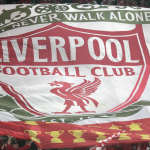DEADLINE Day for Premier League teams used to be at the end of March. Then it was shifted to the end of August or the start of September by Eurocrats (the exact date was based on details no-one was quite sure of; something to do with Wesley Sneijder and the lunar cycle). Now, for the second season in a row, it has, for Premier League teams anyway, been moved to just before the start of the season, due largely to some angry articles about fairness pushed out during the September international break to fill some space. But we are where we are and so here is a handy review of the key transfers on deadline days in the past nine years.
♂️ Who could be on their way to the #PremierLeague from #LaLiga?
@dermotmcorrigan picks 5 players who could be on the move on #DeadlineDay https://t.co/lhHWqJ4AZs
— Unibet (@unibet) August 7, 2019
2011
Arsenal’s wild transfer policy of the early 2010s was witnessed by people who could remember them winning the league in style in 2004. A club who signed bristling promise and turned them into world class talent had become unable to sign, well, almost anyone by this point.
The summer of 2011 had seen Cesc Fabregas depart for Barcelona and Samir Nasri move to Manchester City, and the club had already endured an 8-2 defeat at Old Trafford before the schools had gone back, so Arsene Wenger entered deadline day in a panic. The luxury signing of the day/evening was Mikel Arteta [who would end the season having scored in two separate Premier League games at Ewood Park, which you must say is above average from a non-Blackburn player]. The club also signed Per Mertersacker, Yossi Benayoun and Andre Santos, the latter man last seen apologising to Arsenal fans for swapping shirts with former team-mate Robin van Persie at half-time at Old Trafford.
2012
Hugo Lloris’s scheduled appearance against Aston Villa this Saturday will see him equal Ian Walker’s Tottenham Hotspur goalkeeper Premier League record of 240 games (please, prepare the fireworks) and he has almost certainly been Spurs’ best goalkeeper of the modern era. Signed on deadline day 2012 by brooding rally driver Andre Villas-Boas, the first of Lloris’s 239 top-flight games for the club ended Brad Friedel’s never-to-be-beaten run of 310 consecutive Premier League appearances. 87 Premier League clean sheets since Lloris made his debut is only one fewer than David De Gea, signed by Manchester United a whole year earlier. It makes you think.
2013
David Moyes’ hot pursuit of Marouane Fellaini was seen by humans in 2013 as a sign of weakness, a struggling area manager bringing his tall mate from the pub car park into a tough meeting. But Fellaini is almost certainly the most successful United signing of the post-Ferguson era. He did it for Moyes, he did it for van Gaal, he even did it for Mourinho away at Juventus.
Shots before Fellaini came on:
Juve 20-5 Man UtdShots after Fellaini came on:
Juve 3-5 Man Utd [inc the own goal]— Duncan Alexander (@oilysailor) November 7, 2018
2014
2014 was a drenched dog of a deadline day. The transfer system had become self-aware by this stage and combined with meme culture to create a million possibilities but very few actual deals. Loic Remy’s move from QPR to Chelsea was probably the most notable of deadline day, excelling as an impact substitute for the eventual champions. He remains the last player to score for a league title winning Jose Mourinho side, doing so twice on May 24, the day that Lampard and Gerrard both departed the Premier League with a goal, a day experts are now calling “very much the end of an era.”
2015
On deadline day 2015 Manchester United paid €30,292 for each minute of league football Anthony Martial had experienced at that point. On the same day Southampton paid £11.5m for an SPL defender, Celtic’s Virgil van Dijk. The game had gone mad. Perhaps, or maybe this was deadline day’s final great experiment with sanity. Sometimes things just work out.
2016
2016: “Why have Tottenham paid £30m for Moussa Sissoko?”
2017: “Why did Tottenham pay £30m for Moussa Sissoko?”
2018: “Remember when Tottenham paid £30m for Moussa Sissoko?”
2019: “I always felt he’d come good.”
2017
Danny Drinkwater’s move from Leicester to Chelsea was an absolute Steve Sidwell of a deal. Attractive on paper, but 12 Premier League appearances in two seasons (of all them coming in 2017-18 under Antonio Conte) is a waste of what should have been Drinkwater’s peak years. His most recent appearance for Chelsea was away at Manchester City in March 2018, a game in which the London side essentially gave up trying to even compete for the ball. It was Drinkwater’s 99th and so far final top-flight appearance. Since then 139 players have made their Premier League debut. You can drink water but you can’t outrun time.
2018
“Doing a Fulham” is, as everyone knows, going big and then immediately going even bigger. I’ve even heard it used in supermarkets (“three boxes of Magnums? You’re doing a Fulham”).
Yes, Fulham’s summer transfer window in 2018 has a lot to answer for and no more so than their £30m move for Andre-Frank Zambo Anguissa which came so late in the day that they had to get permission from the Premier League to complete the deal. A red card at Old Trafford and 16 defeats from 22 appearances does not scream bargain, although the 24 characters in his name does draw him level with lengthy icons such as Kevin Theophile-Catherine, Cameron Borthwick-Jackson and Pierre Emerick-Aubamayang. You need big characters when you get promoted to the Premier League but Fulham got this one all wrong.






